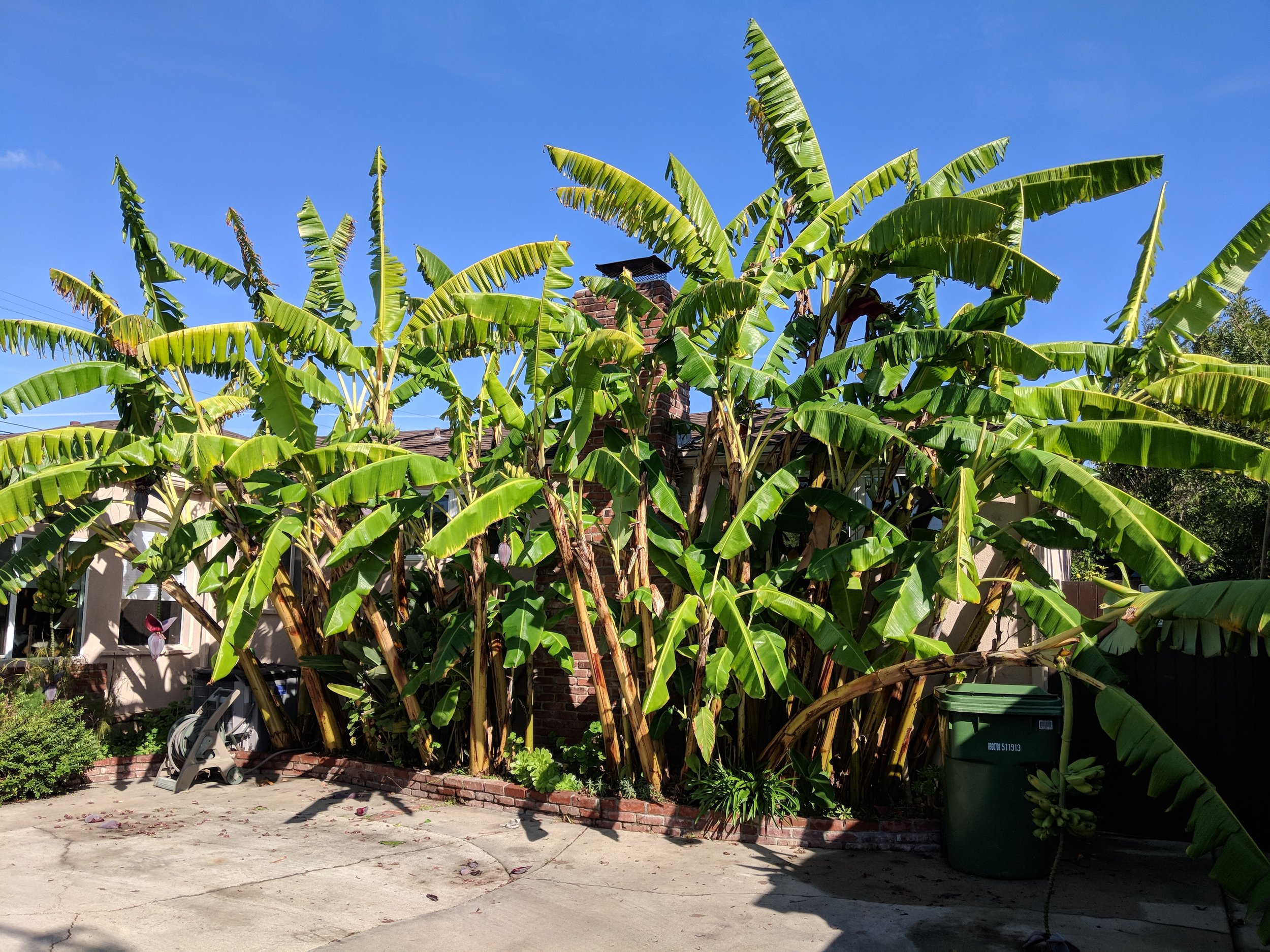Banana ‘Cavendish’ (Musa acuminata)
The Cavendish is one of the most popular and well-known banana, and replaced the Gros Michel banana which was popular in the early 20th century but became extinct due to fungal disease known as Panama disease. Researchers say this could likely occur with the Cavendish as there is no method of sexual reproduction or methods for genetic diversification. The fruit is rich in vitamin B6, potassium, and fiber, and can be used to make pies, breads, pancakes, smoothies, and chips. The plant is a herbaceous plant that can grow up to 20 feet tall and produces large crops of banana bunches. The plant is self-pollinated and does not require cross-pollination. The plant prefers a warm and humid climate and does not have a chill requirement. The fruit matures from September to October and adds beauty to the landscape with its large leaves, purple flowers, and yellow fruits.
The Cavendish is one of the most popular and well-known banana, and replaced the Gros Michel banana which was popular in the early 20th century but became extinct due to fungal disease known as Panama disease. Researchers say this could likely occur with the Cavendish as there is no method of sexual reproduction or methods for genetic diversification. The fruit is rich in vitamin B6, potassium, and fiber, and can be used to make pies, breads, pancakes, smoothies, and chips. The plant is a herbaceous plant that can grow up to 20 feet tall and produces large crops of banana bunches. The plant is self-pollinated and does not require cross-pollination. The plant prefers a warm and humid climate and does not have a chill requirement. The fruit matures from September to October and adds beauty to the landscape with its large leaves, purple flowers, and yellow fruits.
The Cavendish is one of the most popular and well-known banana, and replaced the Gros Michel banana which was popular in the early 20th century but became extinct due to fungal disease known as Panama disease. Researchers say this could likely occur with the Cavendish as there is no method of sexual reproduction or methods for genetic diversification. The fruit is rich in vitamin B6, potassium, and fiber, and can be used to make pies, breads, pancakes, smoothies, and chips. The plant is a herbaceous plant that can grow up to 20 feet tall and produces large crops of banana bunches. The plant is self-pollinated and does not require cross-pollination. The plant prefers a warm and humid climate and does not have a chill requirement. The fruit matures from September to October and adds beauty to the landscape with its large leaves, purple flowers, and yellow fruits.


